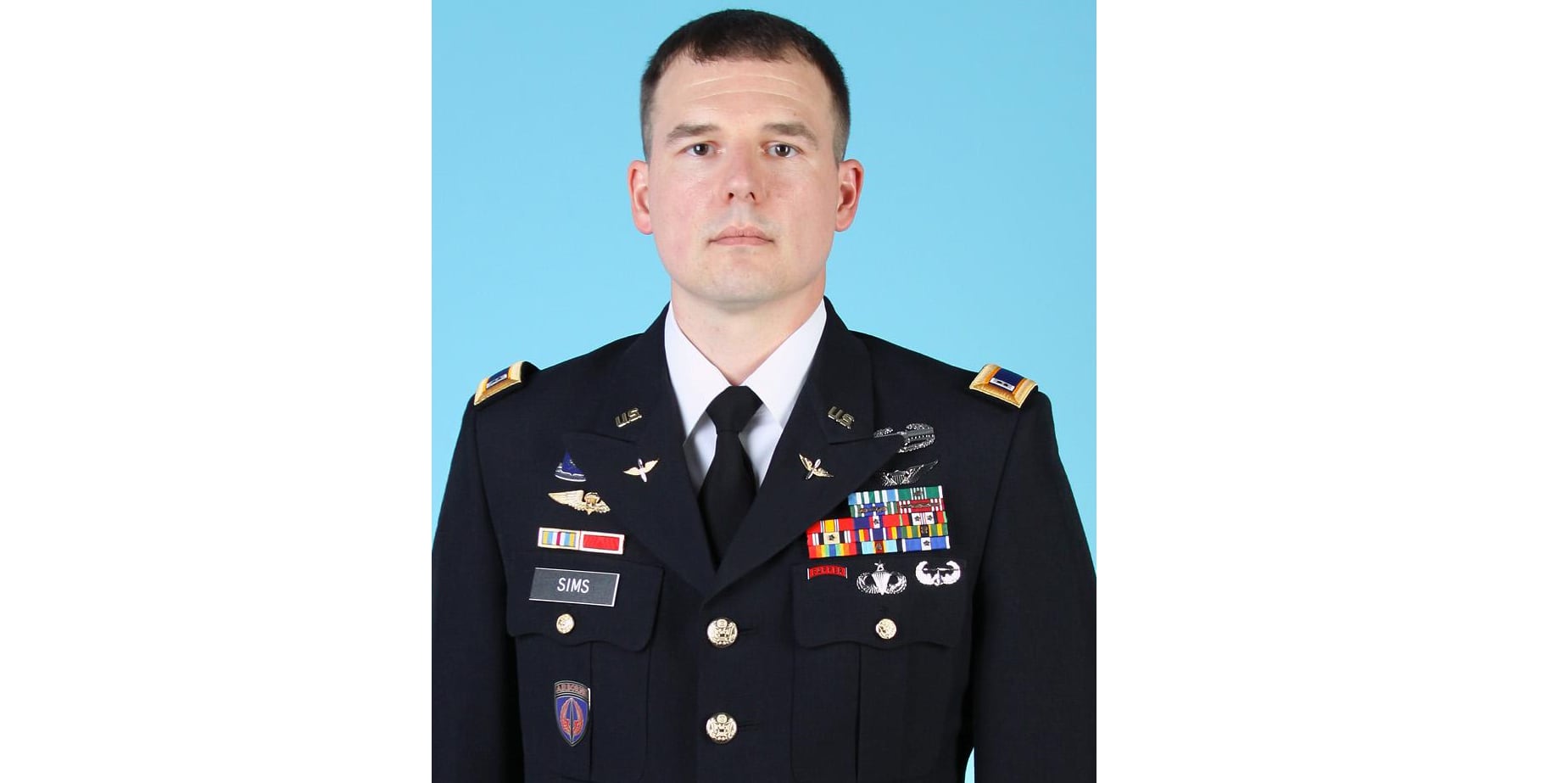A catastrophic MH-47G helicopter crash during a mission to drop off British special operators in Afghanistan three years ago was caused by “severe brownout conditions” that engulfed the aircraft, caused it to drift and ultimately strike a tree several feet before touchdown, according to an investigation obtained this month through a Freedom of Information Act request.
The tree strike caused damage to the MH-47′s rotor, and though the U.S. crew members were able to off-load the British ground force, they crashed mere seconds after attempting to take off again.
The illumination on the night of the Oct. 27, 2017, crash was zero. In addition to a confined helicopter landing zone and a task-saturated cockpit, the Chinook took fire before touching down that “diverted the aircrew’s attention away from the task of landing the helicopter safely,” the investigation reads.
The crash that followed took the life of the MH-47′s co-pilot, Chief Warrant Officer 2 Jacob Sims, and injured six other U.S. service members. Sims received the Purple Heart medal after the incident, his wife, Alicia Marie, told Army Times. The medal is awarded for wounds sustained in combat against enemy forces.
The crew was part of a helicopter assault force made up of three MH-47s from the U.S. Army’s elite 160th Special Operations Aviation Regiment. They were ferrying several dozen United Kingdom Special Forces troops on a raid near Mani village, in Logar province’s Kharwar district.
About 30 seconds before touchdown, the team took enemy fire from PK machine guns, though the investigation concluded that enemy fire did not down the helicopter. Aircrew manning M134 mini-guns on the ramp returned fire and the MH-47 prepared to land.

The pilots were “extremely busy on the radios coordinating with all the air players in the close air support stack due to the complexity of the mission,” the investigation reads, noting that the air players included AC-130 gunships, F-16 fighters, AH-64 Apaches and multiple ISR platforms. “It appears [the pilot] was doing more work than he was supposed to be doing while he was attempting to land.”
The investigator’s interviews with survivors “highlight a cockpit that was task saturated” with an “excessive workload” that should have been shared with other aircraft.
The brownout conditions made the approach “exponentially more difficult,” the investigator wrote. The helicopter drifted inside the brownout and its aft rotor system struck a tree, causing a mechanical failure that ultimately rendered the aircraft unable to generate lift.
The crew felt the aircraft shaking violently but it had already made it to the ground. One soldier told the investigator that the MH-47 was shaking worse than he had ever experienced and said there was an urgency to disembark the ground force.
Despite the shaking, the crew attempted to depart, flying for less than 15 seconds before they crashed 400 meters from the HLZ.
“The description from all the crewmembers is similar at this point — the aircraft shaking had increased, and then it felt like they flew into a wall,” the investigation reads.
When the crew awoke, the MH-47 was upside down with the ramp crushed shut, the cockpit and forward part of the aircraft was demolished and fires had started on both ends. The soldiers who regained consciousness first released themselves from their emergency restraints and began searching for their teammates in the wreckage.
One soldier was pinned by the mini-gun mount and had to be cut from his helmet to be evacuated. Another had to be freed from his seat, where he was strapped in and hanging upside down. There was only one discernable exit, near a round window, and the crew had to drop their gear to squeeze through.
An ISR platform observed the crash and an AC-130 gunship called out “fallen angel” over the radio net, alerting others of the mishap. After nine minutes, the ground force linked up with the survivors. Though injured and in need of medical evacuation, the entire crew survived except for Sims. An autopsy determined he died instantly during the crash.
Sims was on his fourth deployment to Afghanistan with the special operations aviation task force. The pilot-in-command of the MH-47, who was unnamed in the investigation, was on his 16th deployment with the task force. Prior to the mishap, the MH-47 crew had flown about seven missions together in the previous 35 days.
The “root cause” of the crash was poor helicopter landing zone selection, the investigator determined. The HLZ was a confined area measuring 125 by 195 feet. Those dimensions could’ve worked for an HLZ with no obscuration, but instead, heavy dust conditions were present at the site.
The 160th SOAR crews selected the HLZs during the mission, which is not typical, the investigation stated. Usually, the ground force commander selects the HLZs based on their scheme of maneuver and the anticipated risk of enemy contact.
The investigation did not say whether the air planners knew about the heavy dust conditions, and it did not fault any particular planner. However, the investigator wrote, the crew’s great deal of experience “led to overconfidence” with regard to landing in “a confined area under heavy dust conditions.”
“More than 15 years of operating in this environment has led to an acceptance of risk and overconfidence in HLZ selection,” the investigation reads.
Afghan National Army personnel helped remove the wreckage over the course of two days. A fire that continued to burn after the crew escaped the crash site “cooked off” the ammunition inside and made it unapproachable for hours. The aircraft was not distinguishable after the fire, and the ground force detonated thermite grenades to destroy the remaining sensitive items inside.
Kyle Rempfer was an editor and reporter who has covered combat operations, criminal cases, foreign military assistance and training accidents. Before entering journalism, Kyle served in U.S. Air Force Special Tactics and deployed in 2014 to Paktika Province, Afghanistan, and Baghdad, Iraq.




